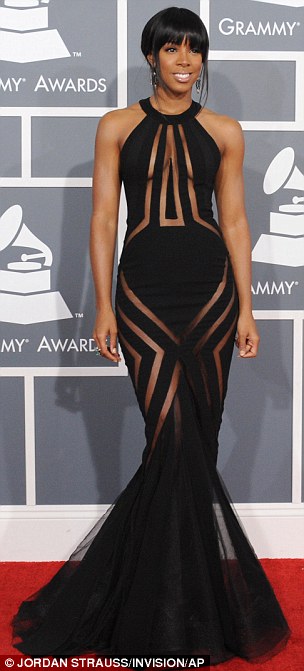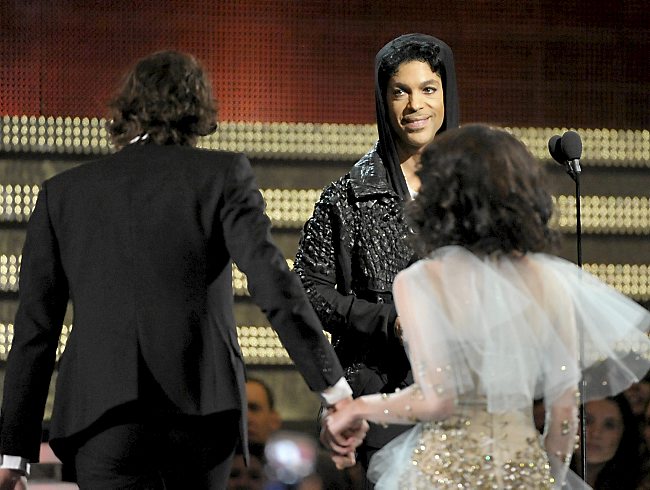It’s been a long time since I’ve gotten excited about the Grammys. I remember music’s “biggest night” being more fun when I was raising teenagers who would be thrilled to see their favorite musicians do their thing and accept shiny awards. Back then, and in between “their” musical acts, I’d get to glimpse the likes of a flame throwing Chaka Khan or some other performer who had spent years honing their craft before tough live audiences, learning what codes and sonic gestures would make the guy at the bar forget his drink and listen or motivate the church mother to forget her troubles and shout a while.
It’s a new day in American pop if we judge by last night’s standards. Okay, granted, I had just spent the day at the Museum of Modern Art, PS1 with a group of bright and engaged graduate students at a historically important exhibition. We heard one of the greatest living American poets Amiri Baraka engage his daughter, the curator of the exhibition, in a fascinating dialogue about art and politics in the 1960s with an audience populated with important contemporary artists but also energetic kids. We also saw some heady performance art about ritual and disaster. But I don’t think that my seeking out such events qualifies me as a cultural snob. I enjoy a range of musical styles and cultural activities. In fact, the museum set put me in the mood to be rocked out.
 Unfortunately the big show lost me about an hour in mostly because I was expecting to be blown away by big talent. This, after all, is the evening where someone like me gets to find out what I’ve been missing (I spend most of my time thinking and writing about the past), what musical acts make musicians rich (always just a little depressing), and what I need to download to stay just about nine months behind the rest of the world. But the Grammy producers provided lots of “production” but with musicianship that rarely rose above the level of the best cover bands I can hear with a $5 cover charge, no minimum and no pyrotechnics, of course.
Unfortunately the big show lost me about an hour in mostly because I was expecting to be blown away by big talent. This, after all, is the evening where someone like me gets to find out what I’ve been missing (I spend most of my time thinking and writing about the past), what musical acts make musicians rich (always just a little depressing), and what I need to download to stay just about nine months behind the rest of the world. But the Grammy producers provided lots of “production” but with musicianship that rarely rose above the level of the best cover bands I can hear with a $5 cover charge, no minimum and no pyrotechnics, of course.
 The biggest attraction for me was Katy Perry’s chest (Kelly Rowland gets an honorable mention) and my informal survey of which stars had unreasonably inked their bodies. Lots of theatrics with large doses of what I think of as just bad, very sincere singing. (I’m a gentleman and a scholar and as a policy, I don’t mention names except to compliment).
The biggest attraction for me was Katy Perry’s chest (Kelly Rowland gets an honorable mention) and my informal survey of which stars had unreasonably inked their bodies. Lots of theatrics with large doses of what I think of as just bad, very sincere singing. (I’m a gentleman and a scholar and as a policy, I don’t mention names except to compliment).
There were highlights, nevertheless. I had given up and retired upstairs for an editing session after a fun and feisty exchange with a couple of Facebook friends, when I heard a group of women “fan screaming” in the apartment above me and another woman doing the same in my living room. This must be good, I thought. I ran downstairs to see Prince in a black get up rocking shades not performing but reading cue cards. (Judging from the reactions all around me, he reads very, very well).
 Bruno Mars sang well for a millionaire. Kelly Clarkson made some clever note choices and maintained a perfect emotional arch on the sixty seconds they allotted to her Carole King tribute. But the best moment of the evening happened, again, above my head. The ladies upstairs were singing the hook to an Alicia Keys song “this girl is on Fi-yah” at full voice and with the word “fire” exactly and purposely a quarter pitch flat or under-pitch. It was the perfect commentary for the evening that had apparently banned thongs, bare breasts (Katy almost missed the memo) and the gospel-ized, jazzed-up, R&B singing that has made American pop a singular expression on the planet (Miguel almost ignored the memo as he showed a good measure of traditional expressive elements in his vocal arsenal).
Bruno Mars sang well for a millionaire. Kelly Clarkson made some clever note choices and maintained a perfect emotional arch on the sixty seconds they allotted to her Carole King tribute. But the best moment of the evening happened, again, above my head. The ladies upstairs were singing the hook to an Alicia Keys song “this girl is on Fi-yah” at full voice and with the word “fire” exactly and purposely a quarter pitch flat or under-pitch. It was the perfect commentary for the evening that had apparently banned thongs, bare breasts (Katy almost missed the memo) and the gospel-ized, jazzed-up, R&B singing that has made American pop a singular expression on the planet (Miguel almost ignored the memo as he showed a good measure of traditional expressive elements in his vocal arsenal).
The upstairs girls’ Fi-yah act made me laugh, cry, and clamor for more. I wish I could have said the same for big show from L.A. It looks like the Superbowl wasn’t the only big event with a “blackout.”
Tags: Alicia Keys, Grammy's, Katy Perry, Kelly Rowland, miguel, Prince, singing



 Share On Facebook
Share On Facebook Tweet It
Tweet It



![Watch D’Angelo’s Powerful Performance of “The Charade” on Saturday Night Live [VIDEO]](https://musiqology.com/blog/wp-content/uploads/2015/02/dangelosnl-225x225.jpg)


